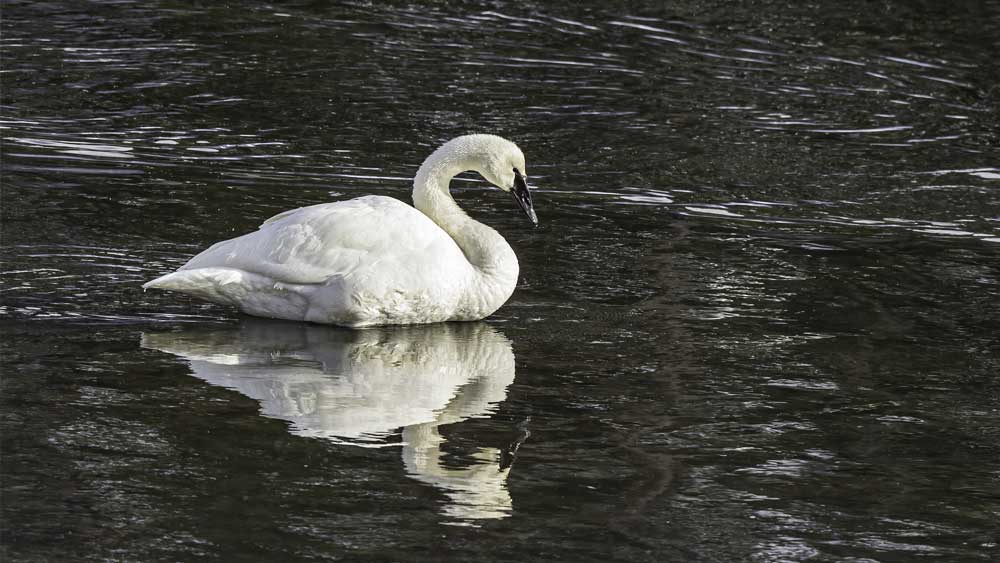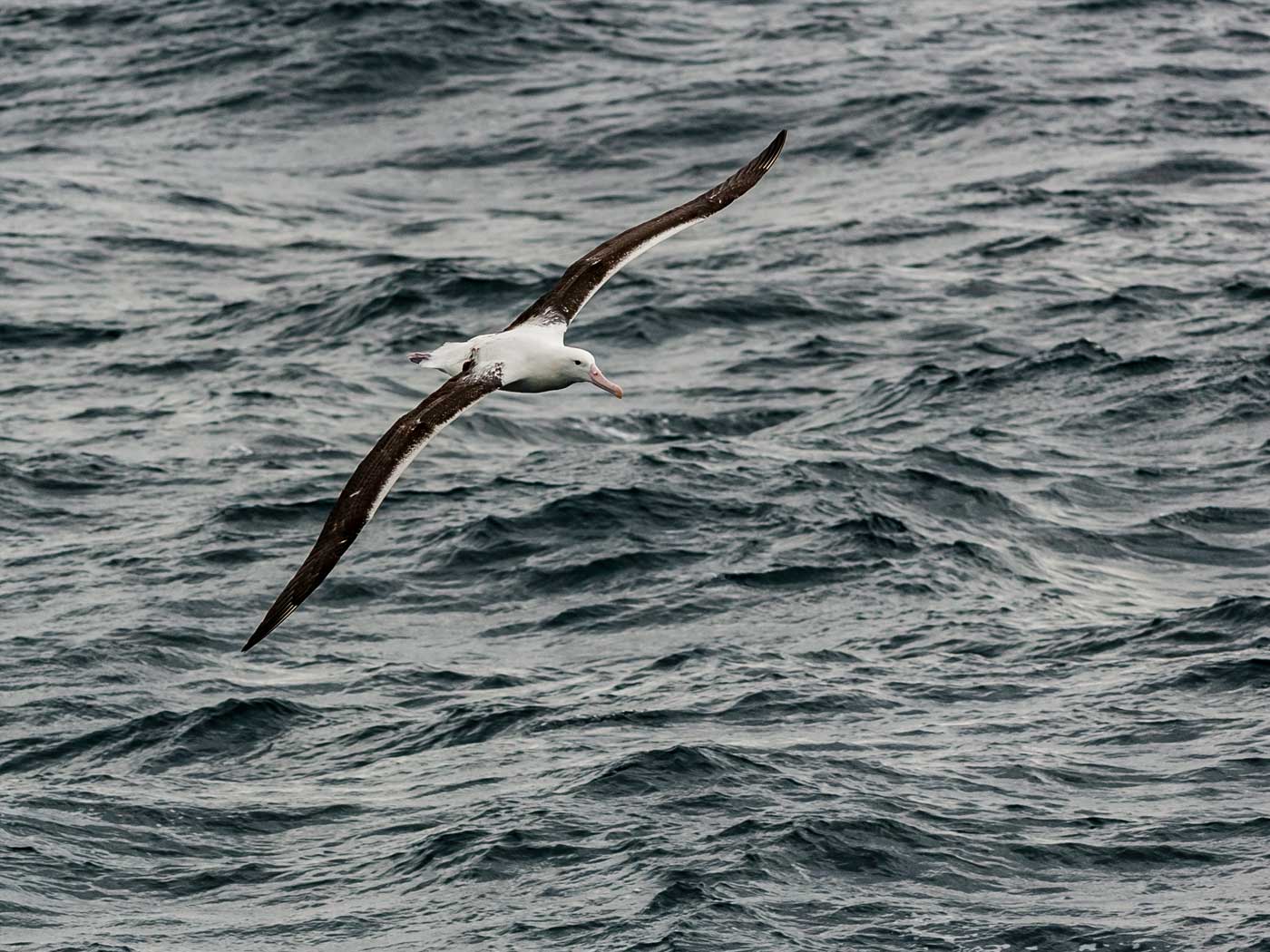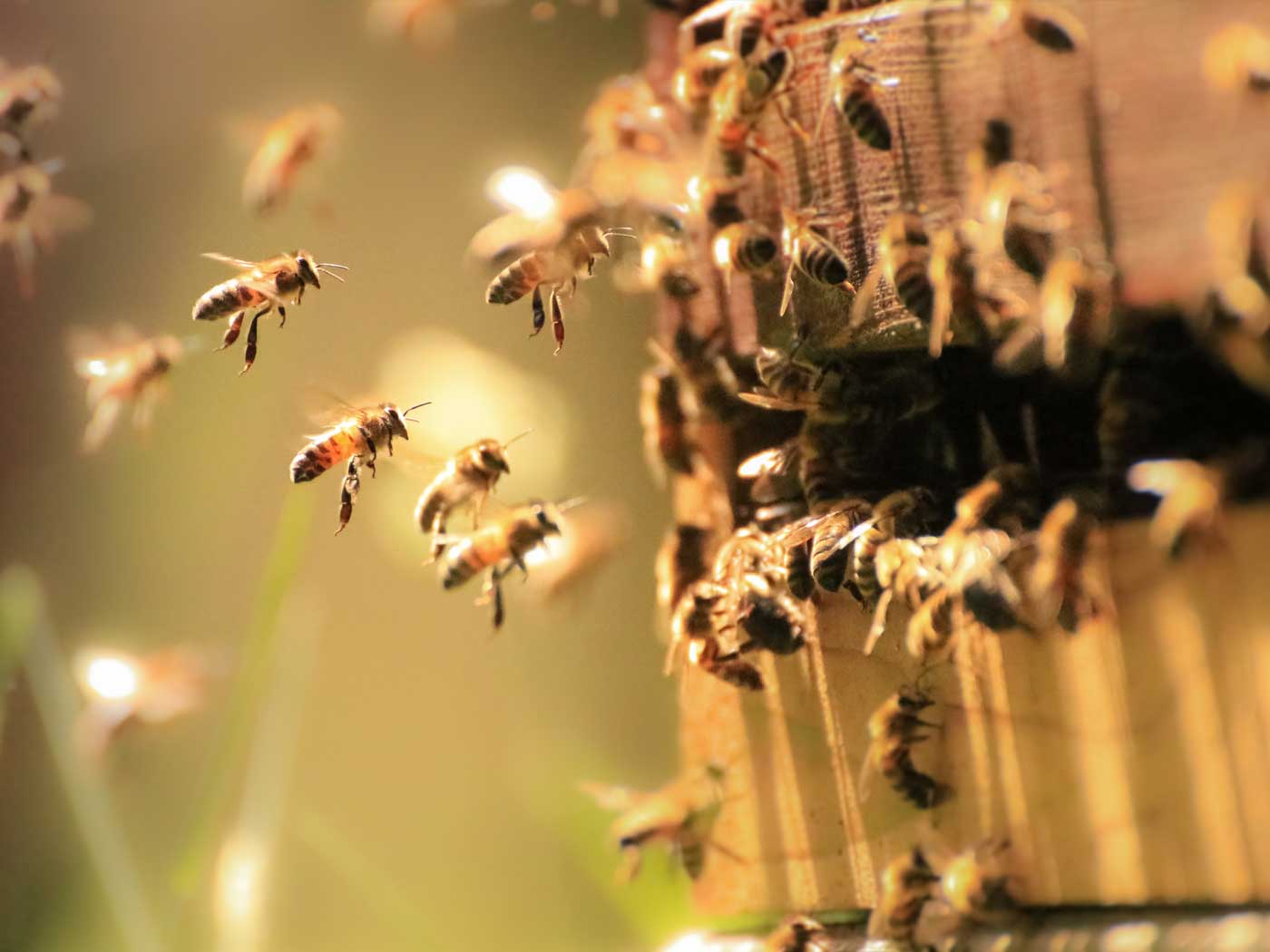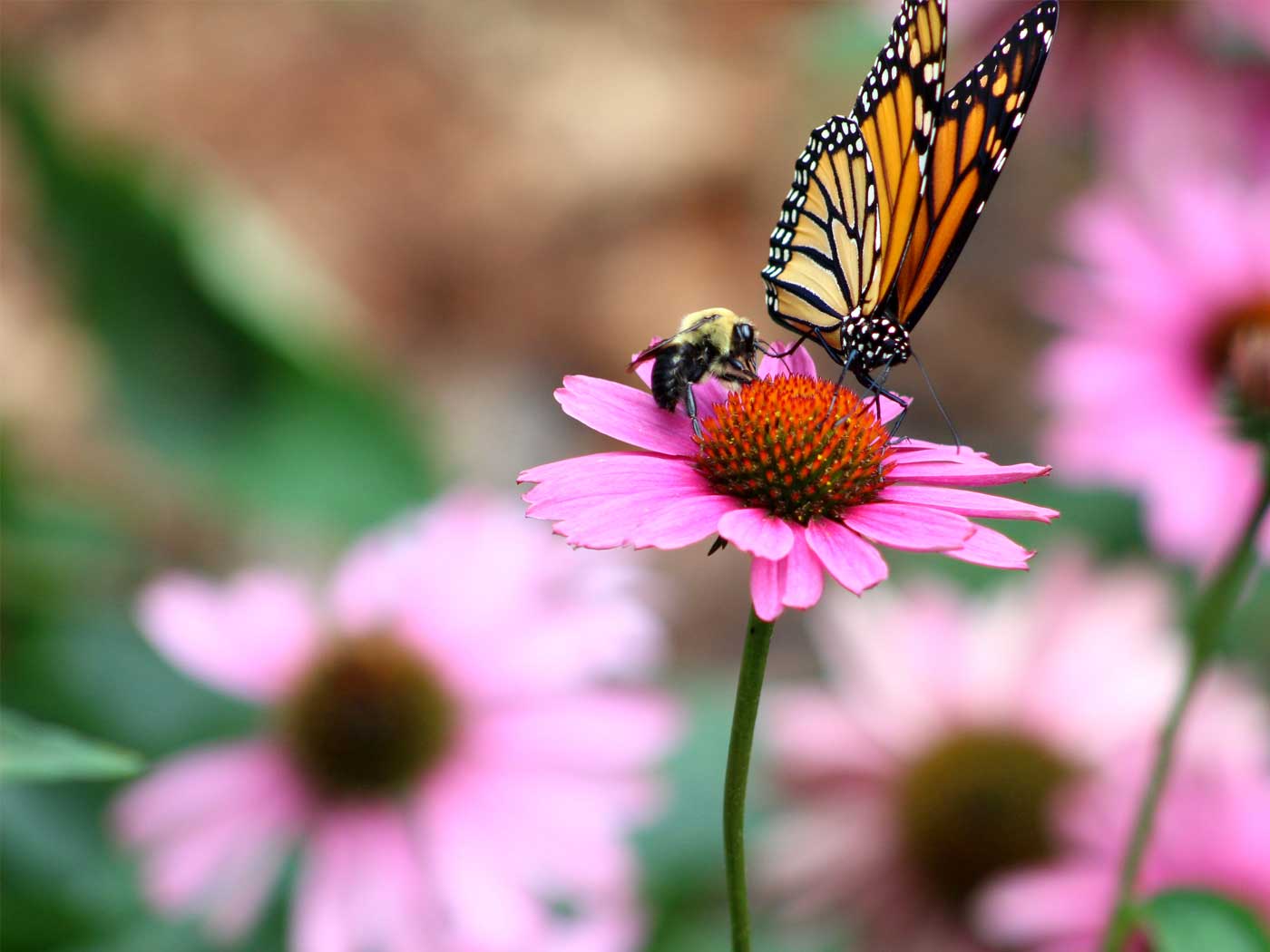Trumpeter swans were once close to extinction. They had been hunted in huge numbers—thousands were killed for their skins and feathers.2 Reversing that trend required enforcing conservation laws, plus proactive wildlife management programs.
According to Winston Banko in his U.S. Fish & Wildlife Service refuge manager’s study, the United States hosted only 488 trumpeter swans in 1957. But that was actually better than the situation a few decades earlier! In 1932, fewer than 70 trumpeter swans were known to exist worldwide. About half of them dwelled in the Wyoming-Montana region near Yellowstone National Park.2,3
The marketable feathers of swans historically superseded even the marketing of their skins (especially by the Hudson’s Bay Company). While swan feathers gained popularity as a glamorous ingredient in fancy hats for ladies or as quills for ink pens, the population of North American swans plummeted.2
The famous artist-ornithologist James Audubon, in 1828, observed that American Indians engaged in swan hunts in order to gain the prized plumage of these wondrous waterfowl. Many of these feathers were exported for resale to ladies of fashion in Europe!2
Saving America’s trumpeter swan from near-extinction is largely due (humanly speaking) to the establishment of the Red Rock Lakes Migratory Waterfowl Refuge, which is part of the Greater Yellowstone ecosystem. It is located mostly within a 60-mile radius that includes portions of southwestern Montana, eastern Idaho, and northwestern Wyoming, including Trumpeter Lake, within Yellowstone National Park.3 Many other conservation efforts combined to rescue the trumpeter swan’s perilous predicament.2,3,4
What a loss it would have been if our earthly home had seen a permanent demise of such noble swans, especially since they once teemed when America was founded.2
But now for last month’s conservation news report, which is truly good news:
All trumpeter swans in our [Minnesota] region owe their existence largely to the efforts of the Nongame Wildlife Program with the Minnesota Department of Natural Resources (DNR), which spearheaded a repopulation plan in the 1980s using 50 swan eggs per year (from 1986–88) from Alaska, which had a healthy trumpeter population. …
Today, the trumpeter swan population in Minnesota has grown to roughly 17,000. Minnesota’s population of trumpeters is now the largest in the continental United States. Trumpeter swans eat aquatic plants and grasses, mate for life as other swans do, and lay a clutch of eggs in the spring that will result in four to six cygnets on average.1
Today, the trumpeter swan population in Minnesota has grown to roughly 17,000. Minnesota’s population of trumpeters is now the largest in the continental United States. Trumpeter swans eat aquatic plants and grasses, mate for life as other swans do, and lay a clutch of eggs in the spring that will result in four to six cygnets on average.1
How was this population comeback achieved? How were those 50 trumpeter swan eggs incubated, hatched, and fledged, so that a recovery generation of those swans could “be fruitful, multiply and fill” the state of Minnesota where once their numbers had been plentiful?
Those precious Alaskan eggs [of Trumpeter Swans], carefully toted in suitcases on Northwest Airlines flights, were later hatched in Forest Lake at a [Minnesota] state wildlife area. The young swans were then released in northwest Minnesota, where they mated, bred, and slowly brought the population back up. The Minnesota Zoo also contributed cygnets [baby swans] to the repopulation program.1
Now, other American zoos host trumpeter swans. Many visitors are probably unaware of the privilege of seeing these swans.5 From 69 trumpeters in the lower 48 states, supplemented by a population in Alaska, leading to the managed transfer of 50 eggs to Minnesota—has now grown to about 17,000 in Minnesota alone! That’s a successful recovery. But not easy.
The trumpeter swan recovery blended some new laws, plus a lot of time, money, wisdom, care, scientific knowledge, technological expertise and applications, and careful avoidance of decisions that would have jeopardized the entire program.6
Lots of moving parts, carefully orchestrated by caring and knowledgeable conservationists—plus God’s providential reservation (whether secularist admit it or not) of hidden populations within Alaska and Canada—were used to re-settle previously extirpated ranges.2,3,4,6
Meanwhile, nowadays, many of the television newscasts, of late, have covered the complicated balancing problems that attempt to halt the contagious spread of the coronavirus-produced disease (COVID-19) against the exploding need for a restoration of our economy.7 Both the coronavirus and a failing economy endanger people’s lives.7
So, as businesses try to prudently and resourcefully weather the storm,7,8 the enormous task of securing a comeback faces us all—as individuals, as families, as neighborhoods, regions, states, and nations.
Perhaps a hopeful lesson can be learned from one of America’s historic—and successful—comebacks, the restoration of North America’s nearly-extinguished trumpeter swans. A successful recovery won’t happen by luck or random activities. Understanding what is needed must be followed by carefully and efficiently applying that knowledge. Wasting time on wrongly modeled theories or unhelpful strategies is a luxury America cannot now afford. But, with God’s providential blessings—and not without them—America can rebound and rebuild. Hopefully Americans will experience a revival in respecting God’s just standards for living, as well as a revival in appreciating His mercy and grace.9 But why both? Because proper respect for the rule of law—and of law itself—leads us to proper appreciation for grace.9
Meanwhile, either America soon vigorously re-prioritizes and re-tools to work for a successful comeback—or else daily life, as we once knew it in America, becomes a “swan’s song.” May God bless us with Christ-honoring revival in our land.
References
1. Needham, G. Nature’s Notebook: The Comeback Story of the Trumpeter Swan. North Oak News. Posted on presspubs.com March 1, 2020, accessed April 14, 2020.
2. Banko, W. E. 1960. The Trumpeter Swan: Its History, Habits, and Population in the United States. North American Fauna. 63: 1-214.
3. “In 1932, fewer than 70 trumpeters were known to exist worldwide, at a location near Yellowstone National Park. This led to the establishment of Red Rock Lakes National Wildlife Refuge in 1935. …Today, estimates show about 46,225 trumpeter swans reside in North America...” U.S. Fish & Wildlife Service. Trumpeter Swan. Red Rock Lake National Wildlife Refuge. Posted on fws.gov, accessed April 10, 2020.
4. Major comebacks can require major legislative and executive governmental actions. With the trumpeter swan recovery effort, four such government actions were: (a) the Lacey Act of 1900, that banned trafficking in illegal wildlife; (b) the Migratory Bird Treaty Act of 1918, that implemented the migratory bird protection “convention” treaty, of 1916, between America and Great Britain (f/b/o Canada); (c) President Franklin D. Roosevelt’s Executive Order 7023 (4-22-1935); and (d) the conservation-funding statute called the Federal Aid in Wildlife Restoration [Pittman-Robertson] Act of 1937. For more on this last federal wildlife conservation-funding law, please review ICR’s article titled “Crayfish, Caribou, and Scientific Evidence in the Wild,” noting how responsible stewardship of God’s creation requires prioritizing truth over theories, for accomplishing worthwhile “science.” Johnson, J. J. S. 2015. Crayfish, Caribou, and Scientific Evidence in the Wild. Acts & Facts. 44(6):20.
5. This author, with extended family members, was privileged to observe Trumpeter Swans at the Columbus Zoo, in Ohio, during mid-August 2015.
6. Conserving wild bird populations is actually a biblical value. See Deuteronomy 22:6-7, a Mosaic law that governed the taking of wild birds (as opposed to domesticated birds like chicken and turkey).
7. Bowling, T. 2020. Citizenship on Earth and in Heaven. COVID-19 News. Posted on ICR.org April 5, 2020, accessed April 14, 2020. See also Haberman, M. and D. E. Saner. 2020. Trump Says Coronavirus Cure Cannot ‘Be Worse Than the Problem Itself.’ The New York Times. Posted on nytimes.com March 23, 2020, accessed April 14, 2020.
8. Smith, M. Businesses Help Community through Crisis. Cross Timbers Gazette. Published April 2020.
9. Galatians 3:24; Romans 3:20-31, 13:1-7.
*Dr. Johnson is Associate Professor of Apologetics and Chief Academic Officer at the Institute for Creation Research.



























